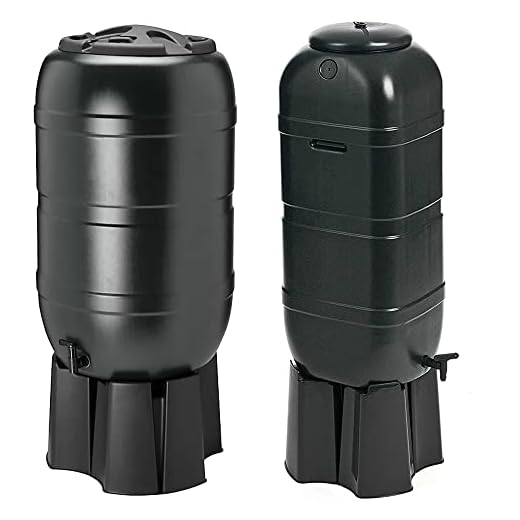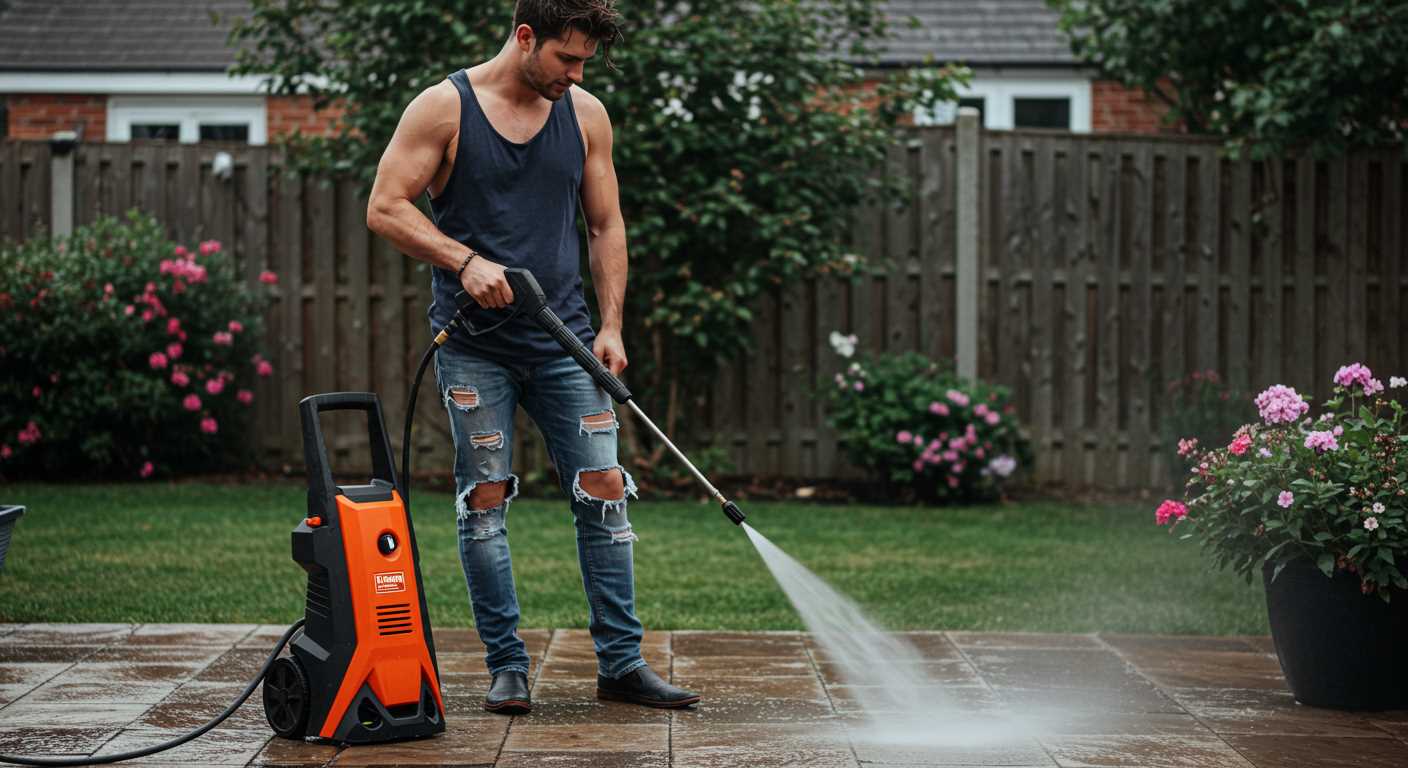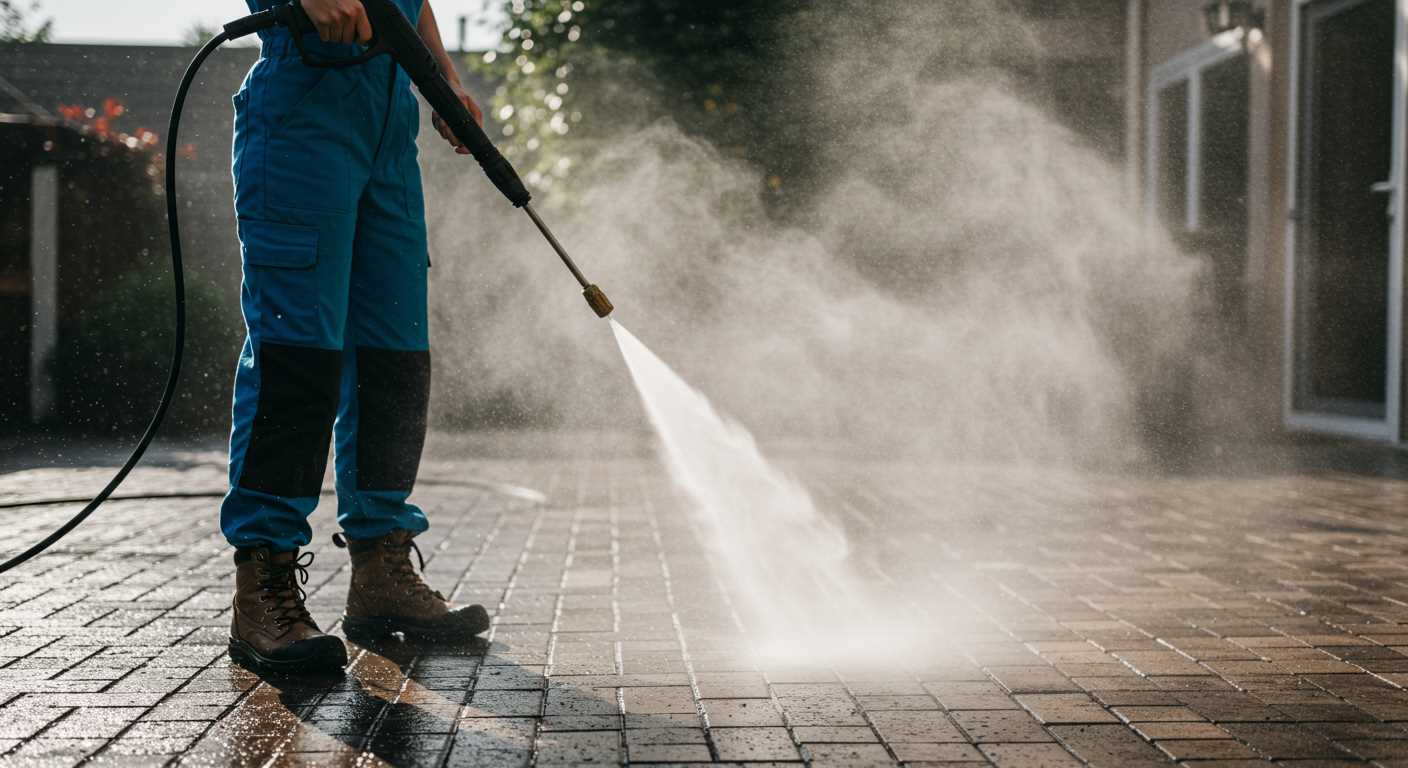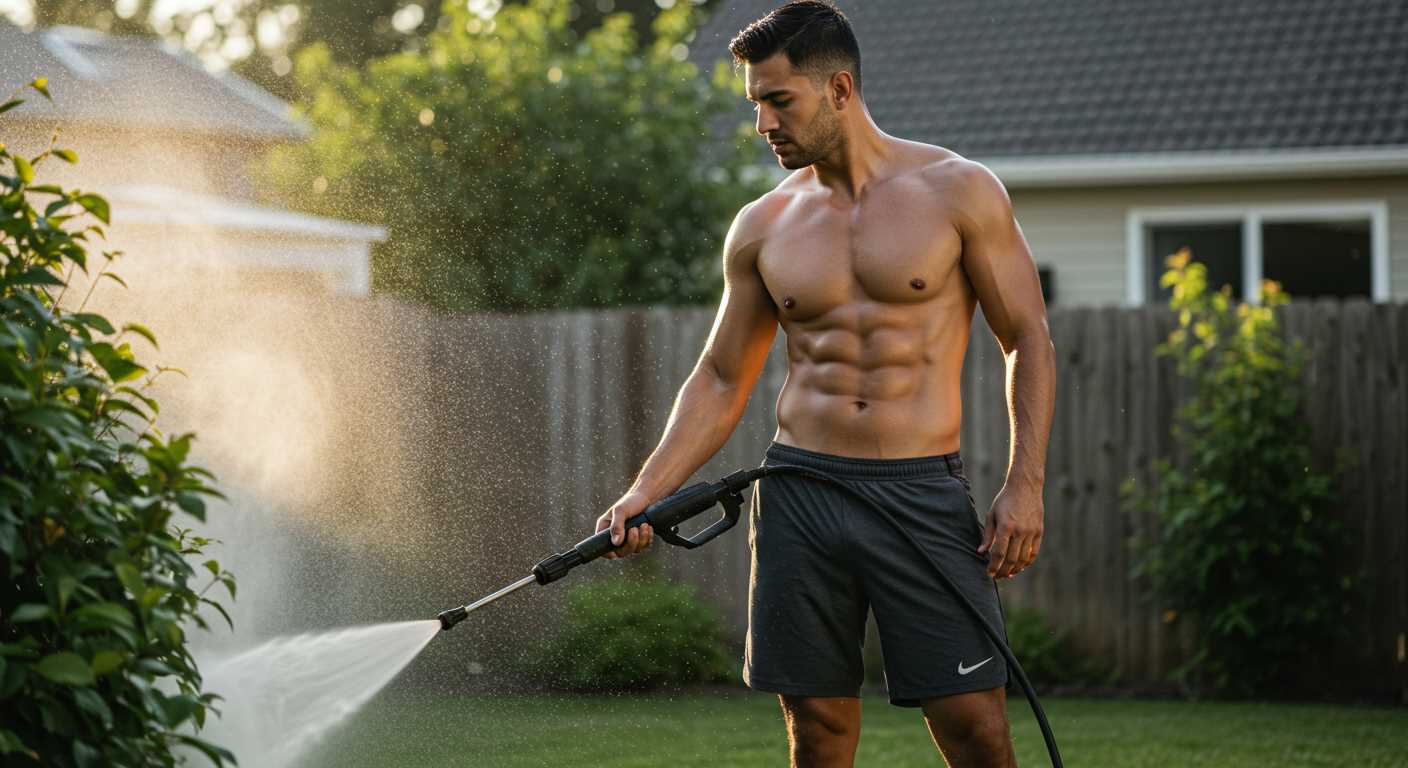



Using a high-pressure cleaning device under diminished fluid flow conditions is certainly feasible, but the results may not meet expectations. Devices designed for optimal efficiency typically require a specific range of inlet pressures to function correctly. Operational effectiveness can decrease significantly if the flow is below the manufacturer’s specifications.
I recommend first checking the water supply. Flow rates can typically be measured using a simple bucket test; fill a one-gallon container and track the duration. An ideal scenario involves at least 2.5 gallons per minute. If the flow falls short, consider alternatives like boosting systems or storage tanks to enhance fluid delivery.
It’s also essential to adjust your cleaning strategy based on the available pressure. Begin with less demanding tasks, gradually working your way up to tougher grime. Each unit has its unique threshold; consult your manual for guidance. Some models boast built-in pressure management systems that can help balance performance despite lower inlet levels.
Lastly, keeping your device well-maintained optimises functionality. Regular inspections of hoses, nozzles, and filters contribute to a more reliable experience, even when faced with reduced supply conditions. Familiarity with your equipment allows for informed adjustments and can lead to satisfactory outcomes regardless of limitations.
Understanding the Minimum Water Pressure Requirements for Pressure Cleaners
Minimum specifications for these devices typically demand a water supply of 20 to 30 psi. Operating below this threshold can lead to subpar results, including inadequate cleaning and potential damage due to insufficient flow. Most models function optimally at around 45 to 60 psi, where the balance between force and volume is ideal for effective cleaning.
In practical terms, installing a nozzle suited for lower flow rates may improve performance if you face a supply issue. For those struggling with lower levels, consider a booster pump to augment the supply. Ensure the system’s plumbing is in good shape, as leaks or restrictions can exacerbate any pressure issues.
Each brand tends to have specific guidelines related to flow requirements, typically measured in gallons per minute (GPM). Many recommend a flow rate of at least 1.5 to 2.5 GPM. It’s wise to consult the manufacturer’s manual for precise details for your model, as non-compliance could void warranties.
Monitoring the source is vital; shared supply lines often lead to reduced flow, particularly peak usage times. Testing your system’s performance before starting any major task will save time and effort, ensuring you achieve optimal results.
How low water pressure affects cleaning performance
When the supply is minimal, cleaning outcomes can significantly suffer. In my years of experience assessing various cleaning devices, I’ve found that inadequate flow can lead to several issues.
- Reduced Cleaning Efficacy: Insufficient supply decreases the force applied to surfaces. This means stubborn stains and grime are often left behind.
- Longer Cleaning Times: Tasks become more time-consuming, as repeated applications may be required to achieve desired results. It’s frustrating to spend extra time on a job that should take less effort.
- Compromised Equipment Functionality: Operating a system below recommended levels can strain components, leading to potential malfunctions or reduced lifespan.
- Inadequate Foam or Detergent Application: Many cleaning agents require a certain flow rate to activate effectively. Reduced supplies will hinder their capabilities, making them less effective.
- Spotting and Streaking: Insufficient flow often leads to uneven coverage, resulting in spots or streaks on surfaces. This can be particularly noticeable on vehicles and glass.
To optimise your cleaning experience, ensure your supply meets the necessary specifications. If you frequently encounter low flow, consider alternative water sources or storage solutions to maintain proper levels. This way, you’ll retain efficiency and effectiveness in your cleaning tasks.
Choosing the right machine for low water flow situations

To ensure optimal functionality in environments with restricted supply, select a unit specifically engineered for minimal flow requirements. Look for models boasting lower minimum inlet flow rates, ideally around 1.5 gallons per minute (GPM) or less. These variations are designed to maintain robust performance, even with limited incoming liquid.
Key features to consider
Several attributes differentiate effective equipment in low flow conditions:
| Feature | Description |
|---|---|
| Adjustable nozzle | Allows for customised spray patterns, optimizing cleaning effectiveness at varying flow rates. |
| Pressure control settings | Enables modification of force based on task requirements, essential for delicate surfaces. |
| Detergent injection system | Facilitates the use of cleaning agents at lower flow rates, enhancing cleaning power. |
| Durable construction | Unit longevity is crucial; opt for high-quality materials that withstand diverse conditions. |
| Compact design | Provides portability and ease of storage, particularly valuable when access to water is restricted. |
Recommended brands and models
Several manufacturers offer reliable solutions for those experiencing limited supply:
1. Karcher K2 – Known for its adaptability and effectiveness in low flow situations.
2. Greenworks GPW1501 – This model features a compact design and adjustable nozzles, ideal for varied applications.
3. Sun Joe SPX3000 – Equipped with dual detergent tanks and high pressure settings, it proves efficient even under restrictions.
When selecting equipment, ensure it aligns with local conditions and specific cleaning needs. Properties that enhance function in less than ideal circumstances lead to better outcomes and satisfaction.
Tips for Boosting Water Pressure Before Using a Power Washer
.jpg)
First and foremost, check for any kinks or bends in your garden hose. A simple adjustment can significantly enhance flow. Make sure the hose is of adequate diameter; a larger diameter allows for better water movement.
Next, evaluate your home’s plumbing. Older pipes can accumulate mineral deposits, which restrict flow. Flushing the system using vinegar or a commercial descaling agent might solve this issue. Additionally, inspect for leaks. Even small leaks can drastically reduce the available volume.
Adjusting the Hose Setup
Positioning the hose correctly can improve performance. Elevating the end of the hose can create gravitational assistance, helping water to flow more freely towards the cleaning device. Also, reduce the length of the hose if possible; shorter hoses generally result in less resistance.
Cleaning and Sourcing Water
Regularly clean your inlet filters as debris can impair water entry into the machine. If possible, consider utilising a rainwater collection system or alternative water source that might provide higher flow rates. Always ensure the water source is free from contaminants to protect your equipment.
Lastly, consult your neighbours. They may have suggestions for enhancing supply from local mains, particularly if several households are experiencing similar issues. Sharing the experience can lead to collective solutions that benefit all.
Comparing Different Types of Pressure Cleaners Under Low Water Supply
When dealing with reduced supply, selecting a cleaner type is critical for achieving satisfactory results. Here’s an overview based on my extensive experience in the field.
Electric Cleaners
Electric models generally have lower demands on supply compared to their gas counterparts. They effectively perform well in urban settings or households where the supply might fluctuate. Key features include:
- Operation from direct household supply without the need for a pump.
- Quiet performance, making them suitable for residential use.
- Lightweight and portable designs, enhancing ease of use.
Gas Powered Devices

While gas-operated variants are typically more powerful, their effectiveness diminishes significantly when the supply is weak. However, they possess certain attributes:
- Greater cleaning force, making them ideal for heavy-duty tasks.
- Independence from electric sources, a benefit in remote locations.
- Ability to use higher grade nozzle attachments for varying tasks.
In summary, for usage dependent on limited supply, electric models are often more reliable and convenient, while gas units offer higher performance for more demanding applications but suffer with inadequate supply. Choosing wisely based on specific requirements will lead to better outcomes and enhanced satisfaction.
Common issues faced when using a pressure cleaner with low inlet flow
One primary challenge encountered is reduced cleaning efficacy. Insufficient input flow means that the device struggles to generate the force necessary for thorough removal of dirt and grime. This often results in streaks and spots left behind after usage, requiring multiple passes to achieve acceptable results.
A frequent concern is the overheating of the machine. When the supply is inadequate, the unit may operate longer than expected to compensate, pushing components to their limits and risking damage. This not only reduces longevity but can lead to costly repairs or replacements.
Cavitation is another problem. A lack of adequate flow can cause the pump to fail in maintaining a steady stream, creating voids in the water which can harm the pump. Sustained cavitation significantly decreases performance and can result in irreversible damage.
Difficulty in achieving the desired pressure settings is common as well. Many models have a minimum operational threshold, and working below it leads to an inability to optimise performance, curtailing versatility in tackling various cleaning tasks.
Lastly, users might face challenges in attachment compatibility. Some accessories designed for high-flow applications may not perform well under low-flow conditions, leading to frustrating experiences. Choosing the correct nozzles and attachments is critical in mitigating these issues and ensuring effective use.
Maintenance Practices to Improve Flow and Pressure

Regular inspection of hoses and connections is crucial. Check for kinks, leaks, or blockages that may hinder fluid movement. Replace any damaged parts immediately to ensure optimal operation.
Cleaning filters and strainers should be a routine task. Accumulation of debris can significantly slow down the supply, so make it a point to inspect and clean these components frequently.
Optimising Water Source
If drawing from a tank or reservoir, consider the placement of the intake. Elevated positions will enhance flow due to gravity. Using a larger diameter hose can also facilitate smoother movement, reducing strain on the entire system.
Regular Equipment Checks
Conduct periodic checks on pumps. Ensure they are functioning correctly without excessive wear. Lubrication of moving parts will promote longevity and keep the system running smoothly. Invest in quality lubricants suitable for the specific components.









